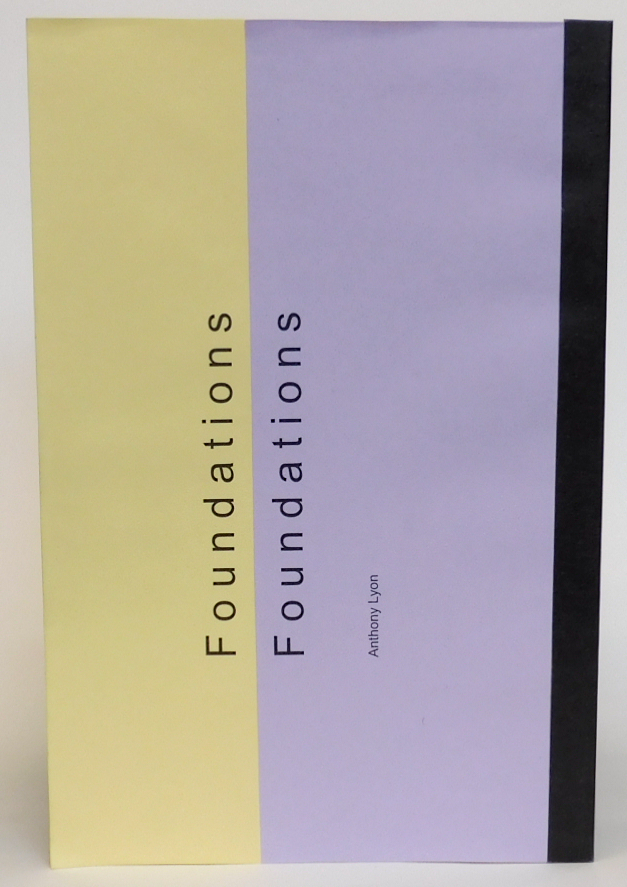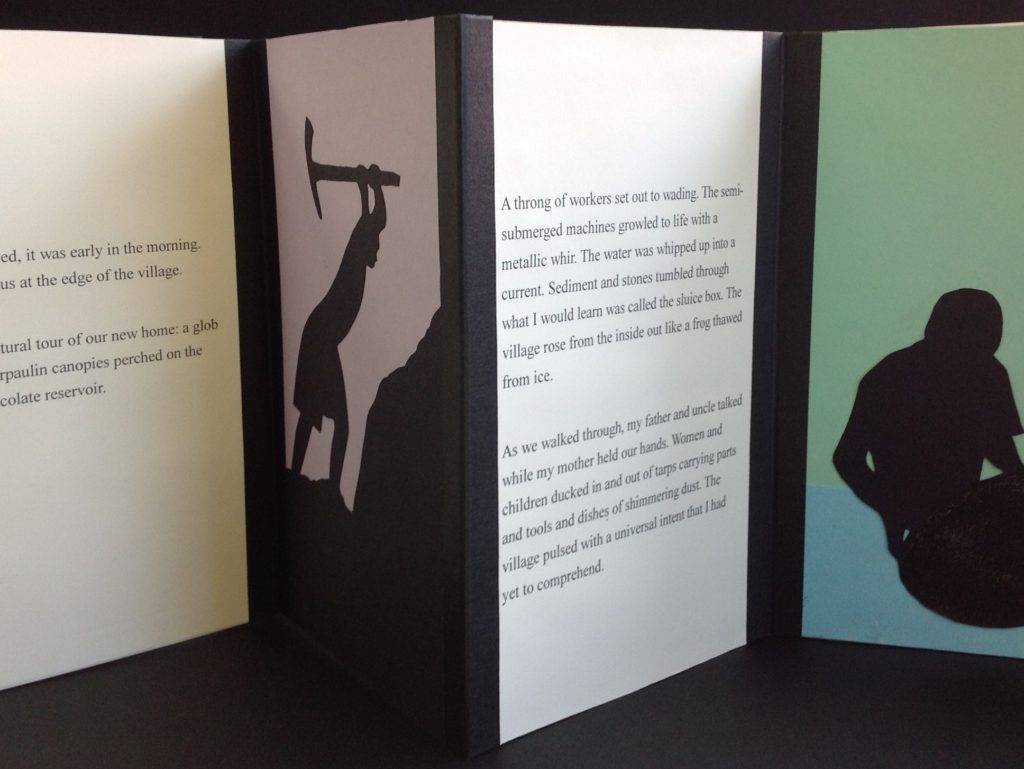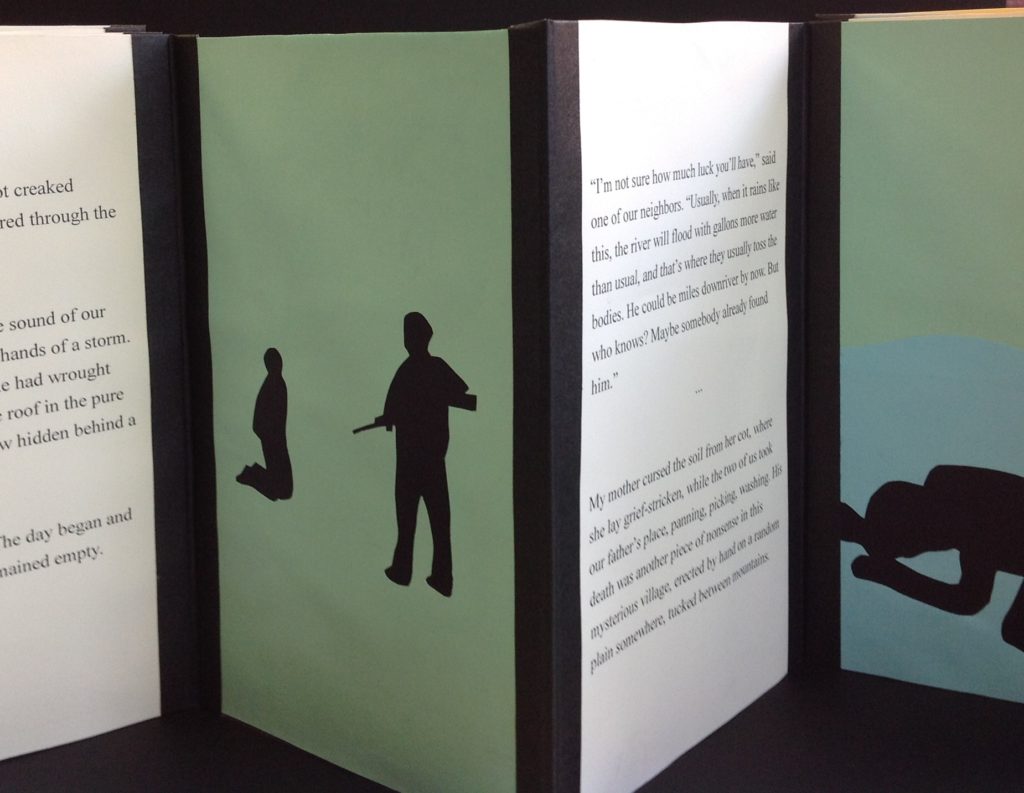Though I am not an “artist” so to speak, my academic career has taken me in a number of abstract and creative directions that have all seemed to underscore the existence of hierarchies in the world created and reinforced by the hyper-prevalence of currency in our globalized economy. This topic has always interested me because, growing up in a conservative white town, the dialogues surrounding income inequality in the world were very different than what I now believe to be the truth. My artists book Foundations seeks to discuss the effects of global capitalist economics in the developing world where groups of people predominantly responsible for the production of raw materials like petroleum and gold are continually exploited by their economic superiors.
Foundations will tell the story of illegal gold miners in Columbia and will discuss the binary opposition between the quality of life of producers and the value of their products. I would like to demonstrate the way that cell phones, the product most often credited with fueling the illegal gold mining industry, have a tendency to produce many levels of ignorance within their users because of their great importance in our society: we need them, so we must be ignorant to their harsher byproducts. I want Foundations to come off as absurd and existential. Written from the perspective of a young child laborer who is as ignorant to the process as the average consumer is, Foundations hopes to demonstrate how massive and disjointed the process of globalized production really is. I would also like to focus on the value of gold as a motif to juxtapose against the hardships that those who extract it are put through, and how this wealth of natural resources was turned into a detriment for those unlucky enough to have settled upon the object of the corporate world powers’ competitive pursuit.
Much of the contextual information in Foundations was collected through the reportage of journalists like Brent McDonald, who stated in an episode of The Weekly by The New York Times that “The growing demand for gold as a conductive metal used in phones and other electronic products has helped spawn a deadly illegal trade that’s harder to track than other black-market commodities like blood diamonds or drugs.” This exploration in The Weekly contributed a great deal to defining the connection between Apple and illegal mining, a connection that is otherwise quite ambiguous. Likewise, reporters like Dominic Parker for The Property and Environment Research Center heavily criticize the ineffective regulatory legislation put in place to reduce the sale of conflict minerals, showcasing the endemic nature of this issue as one not so easily solved by the stroke of the legislative pen.
In terms of medium, the artwork Foundations is done in cut paper to resemble the silhouette-style iPod advertisements from the 2000’s and 2010’s. The images which accompany each page of text are corresponding scenes of mining or subsequent abuse traced and cut from black paper, set against a colored background. This style is meant to connect the negative effects of illegal mining with the capital interests of Apple, who in marketing their products focus on the aesthetic value of their products and advertisements rather than the regulated humanity of their processes.
To view the digital content of “Foundations,” click on this hyperlink.



